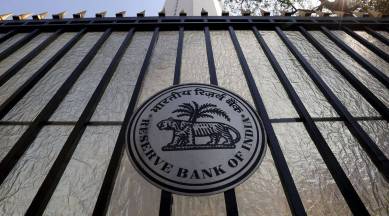RBI allows default loss guarantee arrangement between fintechs and banks, NBFCs
RBI, Reserve Bank of India, NBFC, NBFC sector, default loss guarantee, Business news, Indian express, Current Affairs

The Reserve Bank of India (RBI) Thursday allowed a ‘first loss default guarantee’ (FLDG) arrangement between regulated entities and lending service providers for digital lending.
Under FLDG — a credit-risk sharing agreement — a third party guarantees to compensate up to a certain percentage of default in a loan portfolio of the regulated entities (banks and NBFCs).
“Arrangements between Regulated Entities and Lending Service Providers or between two REs involving default loss guarantee (DLG), commonly known as FLDG, has since been examined by the Bank and it has been decided to permit such arrangements,” RBI said in a release.
It said the arrangement will not be treated as “synthetic securitisation” and will also not attract the provisions of “loan participation”.
Synthetic securitisation is a structure where credit risk of an underlying pool of exposures is transferred, in whole or in part, through the use of credit derivatives or credit guarantees that serve to hedge the credit risk of the portfolio which remains on the balance sheet of the lender.
Under the guidelines, the regulated entities can enter into default loss guarantee arrangements only with a lending service provider or other regulated entities with which it has entered into an outsourcing arrangement.
The guidelines said the arrangements should be backed by an legally enforceable contract covering aspects such as extent of cover, form in which the cover is to be maintained with the regulated entity and timeline for invocation.
Various forms of default loss guarantees allowed for regulated entities are cash deposited with such entities, fixed deposits maintained with a bank with a lien marked in favour of the entity and bank guarantee in favour of the entity.
The RBI said the regulated entities shall ensure that the total amount of default loss guarantee cover on any outstanding portfolio which is specified upfront shall not exceed five per cent of the amount of that loan portfolio.
The responsibility of recognition of individual loan assets in the portfolio as non-performing assets and consequent provisioning will be of the regulated entity.
The RBI also directed these entities to put in place a board-approved policy before entering into any DLG arrangement.
It, however, said DLG arrangement shall not act as a substitute for credit appraisal requirements and robust credit underwriting standards need to be put in place irrespective of cover.
Digital Lenders Association of India (DLAI) CEO Jatinder Handoo, said: “One of the key asks from most sector players has been to provide clarity on the permissible structure for DLG arrangements between two parties. The circular issued today clearly specifies details on scope, eligibility, structure, form, cap, disclosure requirements, and exceptions. This leaves limited room for ambiguity.”